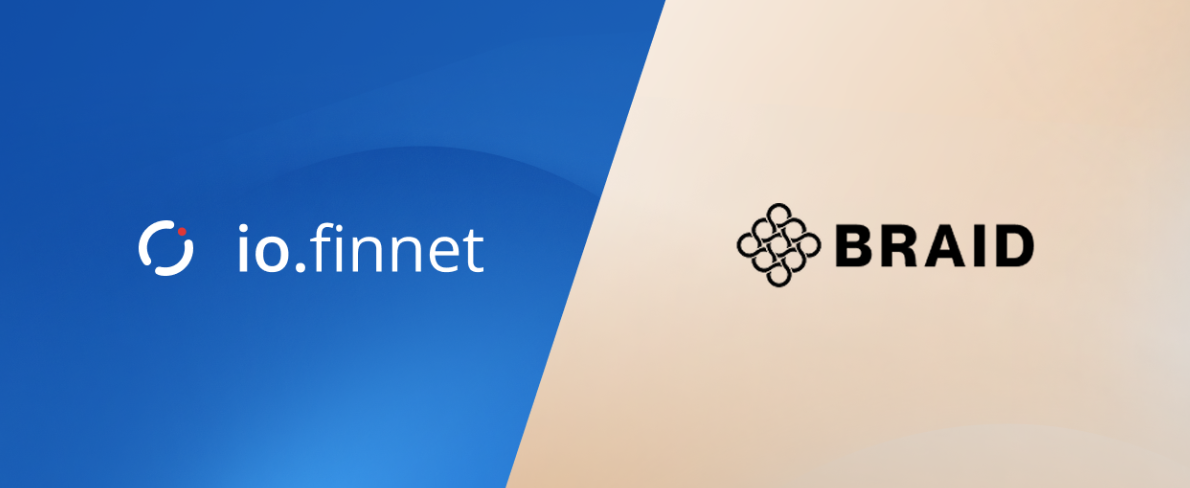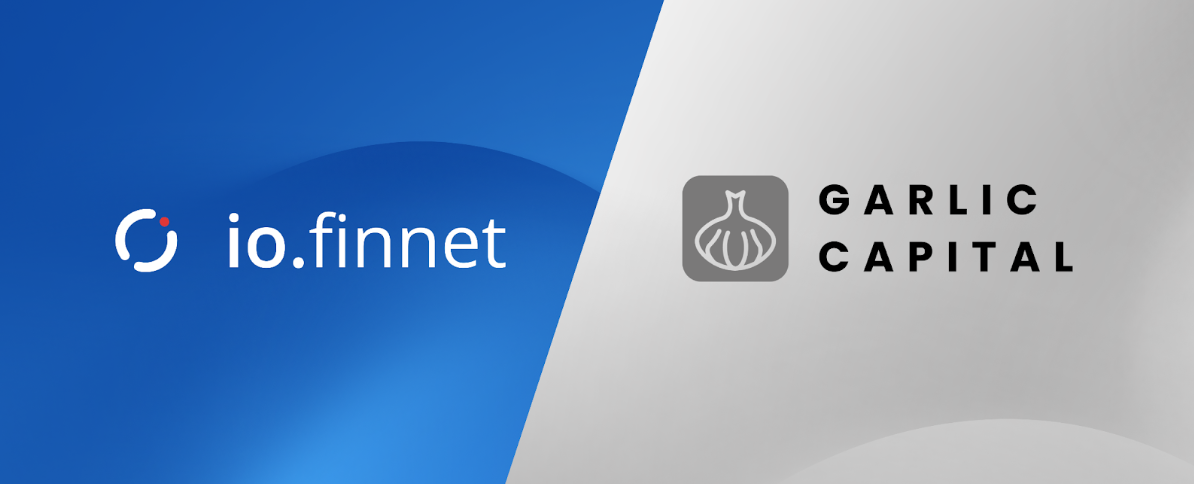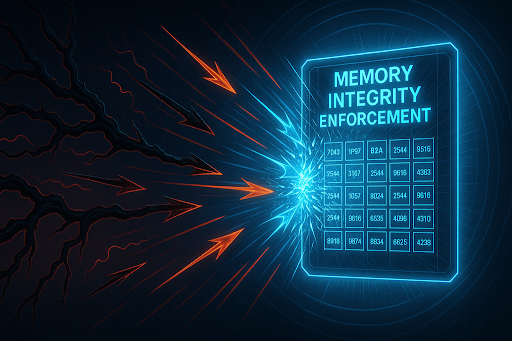LEARN
Crypto Custody Explained:
How It Works in 2025
Navigating the world of cryptocurrency comes with its fair share of risks.
Fortunately, that's where crypto custody steps in, providing a safe harbor for your digital assets.
In this blog, we’ll explore everything you need to know about crypto custody, including the different types of custody solutions and their benefits. To make your life easier, we’ll even guide you through some of the most reliable crypto custody providers in 2025.

This Article Contains
- What Is Crypto Custody?
- What Are the Key Benefits of Crypto Custody?
- 3 Key Types of Crypto Custody Providers
- 3 Types of Crypto Custody Storage Methods and How They Work
- 2 Crypto Custody Models Every Investor Should Know
- 3 Factors to Consider When Choosing a Crypto Custody Model or Solution
- 3 FAQs About Crypto Custody
Crypto custody refers to the secure storage and management of cryptocurrency assets. This can be facilitated by either third-party services or through self-custody, where individuals or organizations maintain direct control over their private keys without relying on external parties.
Here are some key components of crypto custody:
- Private Keys: These crucial cryptographic keys allow you to access and manage your cryptocurrency securely. Private keys play a fundamental role in blockchain technology because if you lose them, you permanently lose access to your cryptocurrency assets. This underscores the critical importance of securely managing these cryptographic keys.
- Multisignature (Multisig): This crypto security feature enhances protection by requiring multiple approvals from different parties before a transaction can proceed. Multisig setups can also involve multiple keys controlled by a single entity, enhancing security by requiring multiple approvals from different devices or accounts.
- Secure Multiparty Computation (MPC): MPC distributes segments of a private key among several parties. This approach ensures that no single party reconstructs the complete key during transactions, significantly enhancing the security of the operation. This technique not only protects against external threats but also mitigates risks of internal fraud, making it a robust security measure for managing sensitive financial transactions.
For example, our io.finnet self-custody solution uses advanced trustless MPC (tMPC) to safeguard transactions by ensuring that the full private key is never exposed, even during transaction processing. (We’ll explore io.finnet in detail later.)
Now that we’ve got the basics in place, let’s explore the core reasons why it’s worth securing your digital assets with a crypto custody solution.
Digital asset holders opting for a crypto custody service can benefit from enhanced security, regulatory compliance, and peace of mind.
Let’s dive deeper into all the benefits it can provide:
- Security and Risk Management
- Enhanced Control Over Digital Assets
- Regulatory Compliance
- Operational Efficiency
Crypto custody reduces the risk of theft and fraud in financial transactions by employing advanced security measures such as encryption, multi-factor authentication, and continuous monitoring.
These protective measures are crucial in maintaining the integrity and safety of digital assets against both external hacks and internal breaches.
Crypto custody services allow you to comprehensively manage your digital assets, enabling secure and controlled access at all times.
This level of control ensures that you can respond swiftly to market changes, execute transactions efficiently, and manage permissions and access — enhancing both security and usability.
Reliable crypto custody solutions make it easier to adhere to regulatory standards and requirements. This would protect you against any potential legal and financial repercussions.
However, it’s a good practice not to rely solely on your custody provider for this.
You should also ensure that your company implements comprehensive policies and procedures at the organizational level to fully comply with regulatory requirements.
Cryptocurrency custody streamlines the management of customer assets by automating key processes like transaction authentication and reporting. This not only makes transaction processing quicker but also reduces administrative overhead.
As a result, crypto custody can significantly lower operational costs and free up resources, allowing you to focus on other core business activities.
Now, what crypto custody solutions can you opt for:
Not all crypto custody providers offer the same level of security and trust. To help you navigate the options, we’ve compiled a list of the most reliable solutions, including:
- Specialist Self-Custody Providers Like io.finnet
- Financial Institutions Like Fidelity Digital Assets
- Crypto Exchanges Like Coinbase Custody and Gemini Custody
io.finnet is a self-custody solution that empowers businesses to manage their digital assets directly without relying on third-party crypto custodians.

Our platform has quickly become a preferred choice for prominent entities in the digital asset space. It’s designed to serve a diverse client base, including OTCs, DeFi platforms, cryptocurrency exchanges, and active trading funds.
Here are the key features and benefits of io.finnet:
- Scalable Trustless Multi-Party Computation (tMPC): Our vault is highly scalable and can be customized to fit any organization's needs. This allows for the creation of unlimited vaults, signers, thresholds, and approver hierarchies to meet specific security requirements.
- Web3 Access: We provide a unified interface to manage all your DeFi apps seamlessly, supporting both EVM and non-EVM chains through WalletConnect integration.
- Comprehensive Asset Support: We support a wide range of digital assets, including Bitcoin, Ethereum, and various tokens, ensuring versatility for diverse portfolio management.
- Compliance and Policy Enforcement: We facilitate the enforcement of internal policies for transfer instructions and validation. This ensures that no single employee can control all funds, thereby enhancing security.
- Regulatory Compliance: Our vault is designed to comply with essential regulatory requirements like KYC (Know Your Customer) and AML (Anti-Money Laundering), adding an extra layer of security and trust for users.
- Customizable Transaction Costs and Speeds: We also offer a customizable gas fee feature that allows users to adjust transaction fees based on their needs, optimizing for cost or speed.
- Advanced Disaster Recovery: We offer options for trustless disaster recovery, allowing for immediate funds recovery without third-party interaction. It uses redundancy (a.k.a. backups) in the existing signing parties to issue a “reshare” to replace lost or compromised devices.
- Developer Integration and Automation Capabilities: We offer comprehensive APIs and SDKs that enable full automation of end-to-end business processes and integration with DeFi platforms. This provides a robust environment for tech-savvy users and developers.
Some traditional financial institutions, including banks and investment firms, have expanded their services to include cryptocurrency custody.
Notable examples include Fidelity Digital Assets and Goldman Sachs, which provide institutional investors with secure ways to hold and manage digital currencies.
While opting for the crypto custodian services provided by financial institutions, you should assess the level of control and security provided. That’s because some may involve third-party control over your assets, unlike self custody providers like io.finnet.
Many cryptocurrency exchanges have developed their own custodian solutions to offer clients both trading and secure storage services on the same platform. Prominent examples include Coinbase Custody and Gemini Custody, which ensure that customer assets are safeguarded under enhanced security protocols.
However, integrating trading and storage services through a crypto custody provider like Gemini Custody could introduce various risks. For example, a failure in one system component may compromise the entire platform's security.
Now, we’ll break down the key ways you can store your crypto asset.
Crypto storage isn’t one-size-fits-all — it comes in various forms, each offering a different balance of security, convenience, and control. Let’s examine the three main types and how they help protect client assets:
This is a digital wallet that is generally always connected to the internet, which facilitates easy access for day-to-day transactions.
However, this constant connectivity also exposes this crypto wallet to higher risks of cyber attacks, as hackers can exploit internet vulnerabilities to attempt unauthorized access.
A cold wallet stores cryptocurrency offline, away from any internet access. This significantly enhances asset security by making it nearly immune to online hacking attempts.
However, accessing funds in this crypto wallet often requires physically connecting the storage device to a computer or network and manually signing transactions, which are procedures not required with online wallets. This extra step makes cold wallets less ideal for users who need frequent and immediate access to their assets or who engage in regular transactions.
Unlike hot wallets, warm wallets connect to the internet intermittently, offering a balance between the accessibility of hot wallets and the enhanced security of cold storage. This makes warm wallets a practical choice for those needing both security and occasional access to their assets.
While a warm wallet offers a balance between security and accessibility, it still exposes client assets to potential online threats during those periods when it’s connected to the internet. This intermittent connectivity could be exploited if not managed with stringent security protocols.
Now, while storage methods determine where crypto assets are kept, custody models define who controls them.
We’ll now take a look at the two critical crypto custody models, including how they work and the benefits they bring:
1. Self-Custody
Self-custody means investors hold and manage their own crypto assets without relying on a third party custody service. This gives them complete control over their digital wallets and keys.
Additionally, it eliminates the risks associated with third-party management (such as potential mismanagement or breaches), but typically requires a strong understanding of cryptographic security practices.
Fortunately, with the right self-custody solution, like io.finnet, opting for self-custody can be streamlined — offering you all the benefits without the hassle.
2. Third-Party Custody
This crypto custodian model involves entrusting the security and management of your crypto asset to external organizations, such as banks, trust companies, or dedicated crypto custodians.
While this option could offer robust security measures and compliance with regulatory standards, it reduces your direct control over your holdings.
Third party custody is beneficial for institutional investors or individuals who prefer not to manage the day-to-day security of their assets but still want professional, secure handling of their investments.
But then, how do you decide which custody model or solution is right for you?
The right custody model can protect your digital assets while ensuring efficient transactions. Here are a few crucial considerations to help you choose wisely:
To ensure maximum asset protection, evaluate the robustness of security measures in your chosen crypto custody provider. This includes features such as encryption and authentication protocols. Additionally, look for features like multi-factor authentication and secure key management practices that minimize exposure to cyber threats.
It’s crucial that the security infrastructure is tested and audited by reputable third-party firms to confirm its effectiveness.
For example, io.finnet’s trustless MPC uses proven open-source cryptography, and our implementation has been rigorously audited by Kudelski Security to ensure it meets the highest standards of security.
Consider the fees associated with different custody providers, including setup costs, transaction fees, and ongoing maintenance expenses.
While higher fees might correlate with more comprehensive security measures or better service quality, it’s important to balance cost with the level of security and service you require. Some providers may offer tiered pricing structures depending on the amount of assets under custody or the frequency of transactions.
To ensure operational efficiency, look for a custodial service that facilitates quick and easy transfers of assets. This includes the ability to execute transactions seamlessly and without unnecessary delays.
A good custody solution should integrate well with trading platforms and other financial services, providing a streamlined experience for managing and transferring assets.
To deepen your understanding of crypto custody, let’s explore the answers to a few frequently asked questions:
1. What Are the Challenges of Crypto Custody, and How Do You Tackle Them?
The common challenges of crypto custody include security vulnerabilities, technical complexity, and liquidity issues.
Let’s explore these in a bit more detail:
- Security Vulnerabilities: Although a custodial service is designed to secure digital assets, they can still be susceptible to hacking and theft. To combat this, you should implement layered security measures like multi-factor authentication (or even better, trustless multi-factor authentication), conduct regular security audits with certified professionals, and use advanced encryption methods that meet industry standards. Make sure you promptly apply all software updates to minimize vulnerabilities to emerging threats.
- Technical Complexity: Managing and scaling crypto custody operations can be technically complex due to the inherent complexities of blockchain technology. To address this, use automated systems and scalable technologies that enhance efficiency without compromising security. Additionally, opt for a self custody solution like io.vault, which features an intuitive interface that simplifies system management and boosts operational efficiency.
- Liquidity Issues: Accessing assets quickly can be problematic in certain custody service setups like cold storage, where assets are not connected to the internet. To mitigate this, opt for solutions that balance crypto security with accessibility, such as combining hot and cold storage methods. This strategy might involve maintaining a portion of assets in more accessible hot wallets for quick transactions, while the bulk remains in cold storage.
2. What Are the Costs Associated With Third-Party Crypto Custody?
Third-party crypto custody services generally charge various fees similar to traditional banking fees.
These include a custody fee, a setup fee, which may be waived by some providers; and a withdrawal fee, which could be a flat rate or a percentage of the amount withdrawn.
3. What Does the Future of Crypto Custody Look Like?
As cryptocurrencies become more integrated into the global financial system, we can expect to see enhanced security measures, such as trustless multi-party computation (tMPC) and hardware security modules (HSMs), becoming standard.
Additionally, regulatory clarity will likely lead to the development of more robust legal frameworks, ensuring better protection for both retail and institutional investors. This evolution will also potentially include innovations like decentralized custody solutions, which could provide users with greater control over their digital assets while still ensuring compliance with emerging regulations.
Protect Your Digital Assets With Crypto Custody Solutions
Understanding and using crypto custody properly is essential for anyone involved in cryptocurrency.
By choosing a reliable self-custody solution like io.finnet , you can ensure that your digital assets are secure and well-managed 24/7.
Why io.finnet?
This crypto custody provider boasts robust security features and adaptability, enabling businesses to directly manage a wide array of digital assets. The tool supports everything from major cryptocurrencies to various tokens, ensuring versatile portfolio management while adhering to strict compliance standards.
Explore io.finnet for free today to see how it’s the solution to all your digital asset management needs.


.svg)



